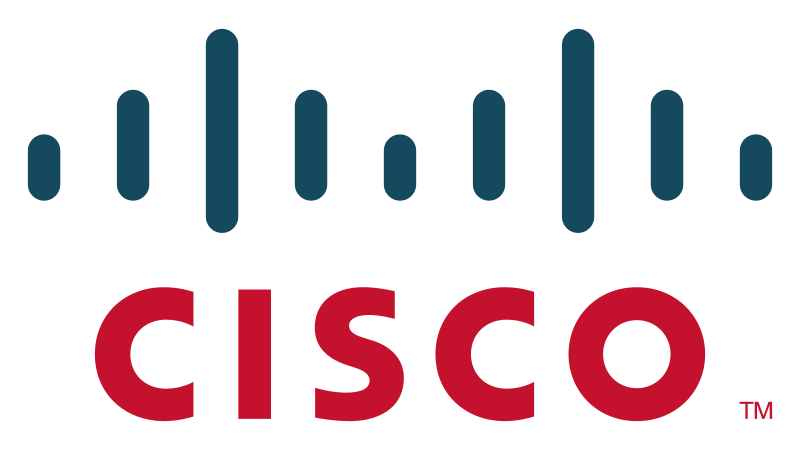Cisco projects data center-cloud traffic to triple by 2017

According to networking giant Cisco, it's a cloud, cloud, cloud, cloud world as cloud-based network traffic explodes. Besides data center/cloud network growing at a remarkable rate, Cisco also foresees the majority of server workloads moving from traditional servers to the cloud by 2014.

In the third annual Cisco Global Cloud Index (2012–2017) issued on October 15, Cisco forecasts "that global cloud traffic … is expected to grow 4.5-fold." That amounts to a 35 percent combined annual growth rate (CAGR) — from 1.2 zettabytes of annual traffic in 2012 to 5.3 zettabytes by 2017. Overall, Cisco expects "global data center traffic will grow threefold and reach a total of 7.7 zettabytes annually by 2017."
What's a zettabyte you ask? A zettabyte is a billion terabytes. To put that into context, 7.7 zettabytes is equivalent to:
- 107 trillion hours of streaming music — about 1.5 years of continuous music streaming for the world’s population in 2017.
- 19 trillion hours of business Web conferencing — approximately 14 hours of daily web conferencing for the world’s workforce in 2017.
- 8 trillion hours of online high-definition (HD) video streaming —about 2.5 hours of daily streamed HD video for everyone in the world in 2017.
Most of that data center traffic won't be going for entertainment. Cisco's experts estimate that "approximately 17 percent of data center traffic will be fueled by end users accessing clouds, video streaming, collaboration and connected devices, all of which contribute to the Internet of Everything, which is the networked connection of people, data, processes and things."
If those numbers seem impressive, consider that IDC estimates that the Internet of Everything will amount to an $8.9 trillion market in 2020. To co-ordinate IDC's estimated 212-billion things, data centers will need to shoulder the load.
Featured
Indeed, according to Cisco, most of data center and cloud-computing traffic is caused by "activities that are virtually invisible to individuals." For 2012–2017, Cisco forecasts that 7 percent of data center traffic will be generated between data centers, primarily driven by data replication and software/system updates. An additional 76 percent of data center traffic will stay within the data center and will be largely generated by storage, production and development data in a virtualized environment.
"People all over the world continue to demand the ability to access personal, business and entertainment content anywhere on any device, and each transaction in a virtualized, cloud environment can cause cascading effects on the network,” said Doug Merritt, Cisco's Senior Vice President of Product and Solutions Marketing in a statement. “Because of this continuing trend, we are seeing huge increases in the amount of cloud traffic within, between and beyond data centers over the next four years."
How much exactly? Cisco estimates that:
- Global data center traffic growth will increase three-fold by 2017 — Cisco forecasts that global data center traffic will triple from 2.6 zettabytes in 2012 to 7.7 zettabytes annually in 2017, representing a 25 percent CAGR.
- Global cloud traffic will grow faster than overall global data center traffic — The transition to cloud services is driving global cloud traffic at a growth rate greater than global data center traffic. Global data center traffic will grow threefold (a 25 percent CAGR) from 2012 to 2017, while global cloud traffic will grow 4.5-fold (a 35 percent CAGR) over the same period.
- Global cloud traffic will account for more than two-thirds of total global data center traffic — Specifically, cloud traffic will grow from 46 percent of total data center traffic (98 exabytes per month or 1.2 zettabytes annually) in 2012 to 69 percent of total data center traffic (443 exabytes per month or 5.3 zettabytes annually) by 2017.
- In 2012, North America generated the most cloud traffic (469 exabytes annually), followed by Asia Pacific (319 exabytes annually) and Western Europe (225 exabytes annually).
- By 2017, North America will generate the most cloud traffic with 1.886 zettabytes annually, but Asia Pacific, with 1.876 zettabytes annually, will significantly narrow the gap, with Western Europe trailing with 770 exabytes annually.
At the same time, Cisco believes server and data center workloads are moving to the cloud and they won't be coming back:
- Workload transitions — From 2012 to 2017, data center workloads will grow 2.3-fold; cloud workloads will grow 3.7-fold. In 2012, 39 percent of workloads were processed in the cloud, with 61 percent being handled in a traditional data center.
- 2014 will be the first year when the majority of workloads shift to the cloud — 51 percent of all workloads will be processed in the cloud versus 49 percent in the traditional IT space.
- By 2017, nearly two-thirds or 63 percent of workloads will be processed by cloud data centers — Only 37 percent will be processed by traditional data centers.
The key takeaways are that high-speed data center networking will become even more important than it is now and that tomorrow's workloads will be running on the cloud and virtual machines. The day of the conventional "one physical server, one workload" is coming to an end.
Related Stories: